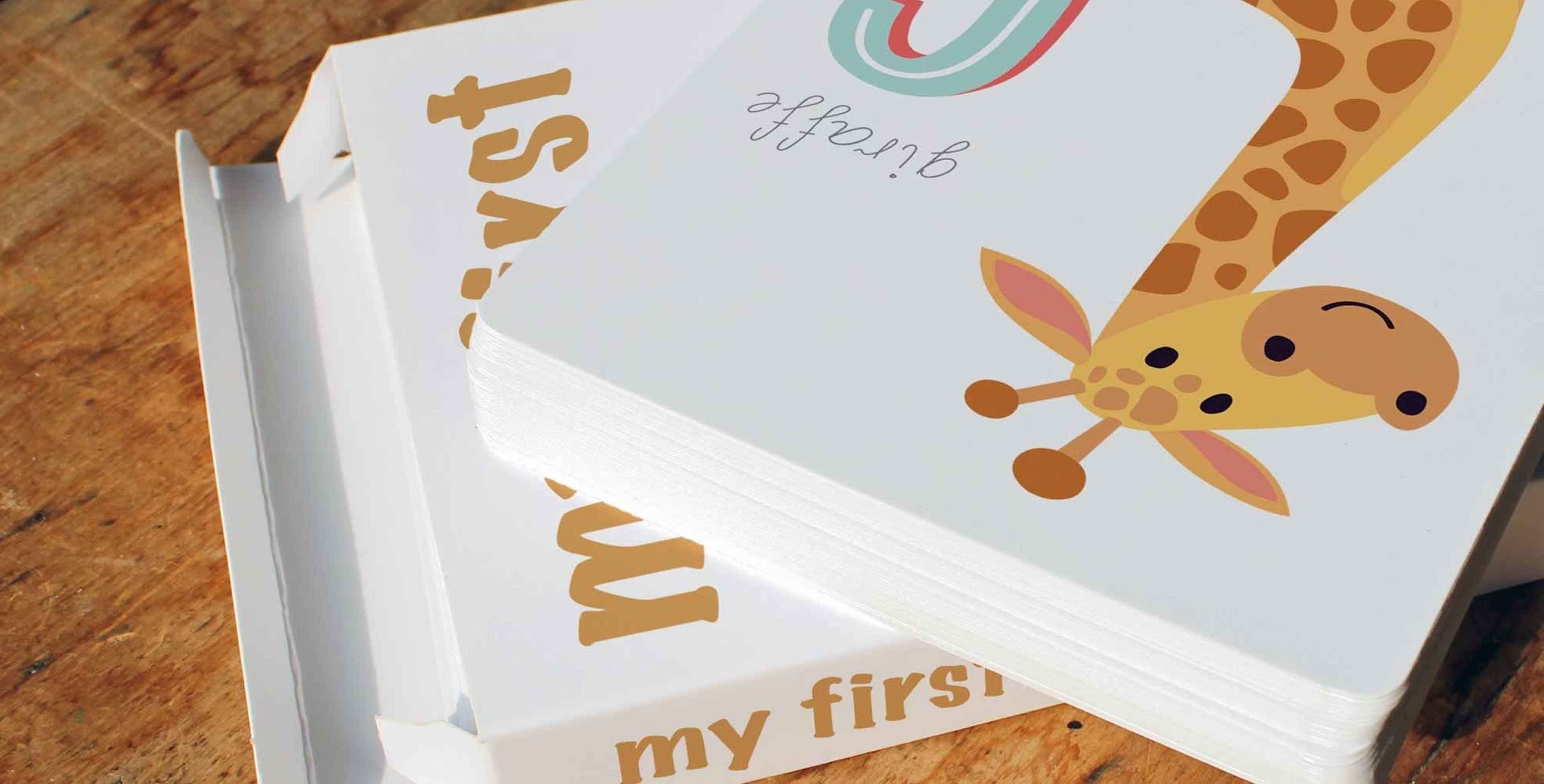Etsy Store Owners: How To Boost Profits With Printed Flash Cards

Online marketplaces - such as Etsy - are a great way for illustrators, designers and creatives to generate extra cash through the sale of printed products such as art prints, greetings cards, mugs, bags and t-shirts. However, have you ever considered creating your own set of custom printed flash cards? It's an unusual, premium product, which could set your store apart from the rest and allow you to target specific high value niches.
So let's take a look at some common uses for flash cards, how you go about creating your own cards for sale and why every creative should consider adding this exciting product to their portfolio.
Before we get started, what exactly are flash cards?
Flash cards have been in existence for hundreds of years in one form or another and are a great way to memorise information or revise for a test. The modern day equivalent is made up of a set of cards, similar to a deck of playing cards. They can be printed with all the information on one side of the card or, alternatively, with a question on one side and its corresponding answer on the reverse. The term 'flash' comes from the way in which cards are held up in quick succession, allowing the user to reveal - and memorise - the content at speed.
What are flash cards used for?
By far the most common use of flash cards is to help pre-schoolers learn about colours, numbers, letters or common words. They generally feature cute illustrations, bold colours and simple, repetitive messaging and are used to introduce young children to basic concepts in a fun and accessible way. Flash cards are also a really popular tool for kids with dyslexia, because they allow you to break up complex words or phrases into more manageable portions.
However, flash cards aren't just for little ones, far from it! The old saying goes "you can't teach an old dog new tricks" but that's not true. You just need to find the right way to remember. And one of the best ways is with flash cards! That's why people of all ages use the power of flash cards to help them learn new languages, study for exams or brush up on their memory skills. They can be designed with any number of specific themes in mind, from medical terms to capital cities; chemical symbols to road signs; historical dates to keyboard shortcuts.
Flash cards are both educational and fun, which is why they have such a strong nostalgic appeal to us all. They're the perfect way to learn something new and impress friends (and teachers!) with newfound knowledge!
How do you go about creating your own flash cards?
Now that we've looked at some of the common uses for flash cards, let's find out how to go about creating your own packs of cards for retail sale.
Creating flash cards requires a slightly different approach to designing printed products such as posters and stationery items. The key difference is that you need to take into account the fact that they will be read and studied at speed.
For example, there's no point in laboriously adding beautiful vintage images to your cards if they're going to be held up and rapidly flipped through. That's why flash card designs work best when they are bold, clear and concise. Use simple fonts (such as Helvetica and Futura), basic illustrations and striking colours.
Of course, there's nothing wrong with adding your creativity and personality, but try to keep each card consistent and stick to a limited palette of colours. This will help the user to quickly scan each successive card and absorb important information at a glance.
Whatever software you use to generate your artwork - whether it's Adobe Illustrator, Canva, or even Word - remember to save your file as a print ready PDF with a separate page for each side of your cards.
What about packaging?
Just as with packs of playing cards, flash cards are generally presented in a cardboard box. This helps to protect the cards, keeping them in order and allowing users to carry them around easily. Custom printed flash card boxes give you the opportunity to promote your branding and provide instructions for use.
How do I sell my flash cards?
Most of the flash cards we produce are sold via online marketplaces such as Etsy and NotOnTheHighStreet. However, they can also be sold via specialist retailers which specialise in your chosen niche. Whether you're a professional designer or an amateur creative, craft fares, gift shops and bookstores can also be great places to sell your wares and generate additional income.
By applying your creativity to printed products, you have the opportunity to make money doing something you love. And by selling flash cards, you'll be helping your customers to learn and grow while earning a profit for yourself. Give it a try and please let us know how you get on.

